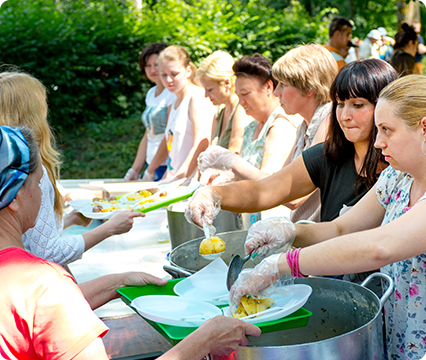

Programs and Projects
The CNP Programs and Projects Research Category explores programs and projects used within the field. To view each original study on the open internet, click “Original.” To view the CNP-written abstract summary, click “CNP Summary.” While only some of the CNP-written abstract summaries are available below for free, all abstract summaries are available to CNP members through the CNP Library Membership.
Adequate consumption of fruits and vegetables (F&V) as part of a healthy diet may help decrease the odds of suffering from chronic diseases, however, most Western populations fail to achieve dietary recommendations, particularly at lower income levels. Efforts need to be directed to establish cost-effective and practical methods to tackle the environmental and personal factors related to F&V consumption. In this study by Gans et al. (2018), the authors bring forth the results of a cluster randomized controlled trial investigating the 'Live Well, Viva Bien' (LWVB), a multifaceted intervention that combines discounted, mobile, fresh F&V markets and nutritional education. The LWVB intervention targeted 15 subsidized housing locations (8 intervention [n = 837] and 7 control locations [n = 760], 54% Hispanic, 73% women, 17% black, mean age = 54 years), presenting them with either mobile F&V markets plus nutrition education (through campaigns, newsletters, DVDs, recipes and chef demonstrations) at intervention locations, or with physical activity and stress interventions at the control locations. F&V consumption was evaluated using the National Cancer Institute's 'Eating at America's Table All Day Screener', and study participants were followed up at 6 and 12 months. Analysis of the results revealed a significant increase of F&V consumption and F&V-related dietary behaviors in the intervention group, and a concomitant decrease of F&V consumption in the control group. In addition, participants who attended more F&V markets reported a significantly higher likelihood to consume more F&V, and that the nutrition education components (namely DVDs, recipes, and taste-testing) led to enhancing F&V consumption. In conclusion, the authors comment on how the LWVB intervention showcased the impact of year-round F&V markets on dietary intake in low-income adults, and hence the importance of mobile F&V markets. Furthermore, the results provide evidence to aid environmental change initiatives and help ameliorate F&V consumption and dietary-related health disparities.
2023
Impact of produce prescriptions on diet, food security, and cardiometabolic health outcomes: A multisite evaluation of 9 produce prescription programs in the United States
CNP Research Summary can be found in the CNP Library Membership
2018
Multilevel approaches to increase fruit and vegetable intake in low-income housing communities: Final results of the 'Live Well, Viva Bien' cluster-randomized trial
2015
Food Rx: A community-university partnership to prescribe healthy eating on the south side of Chicago
